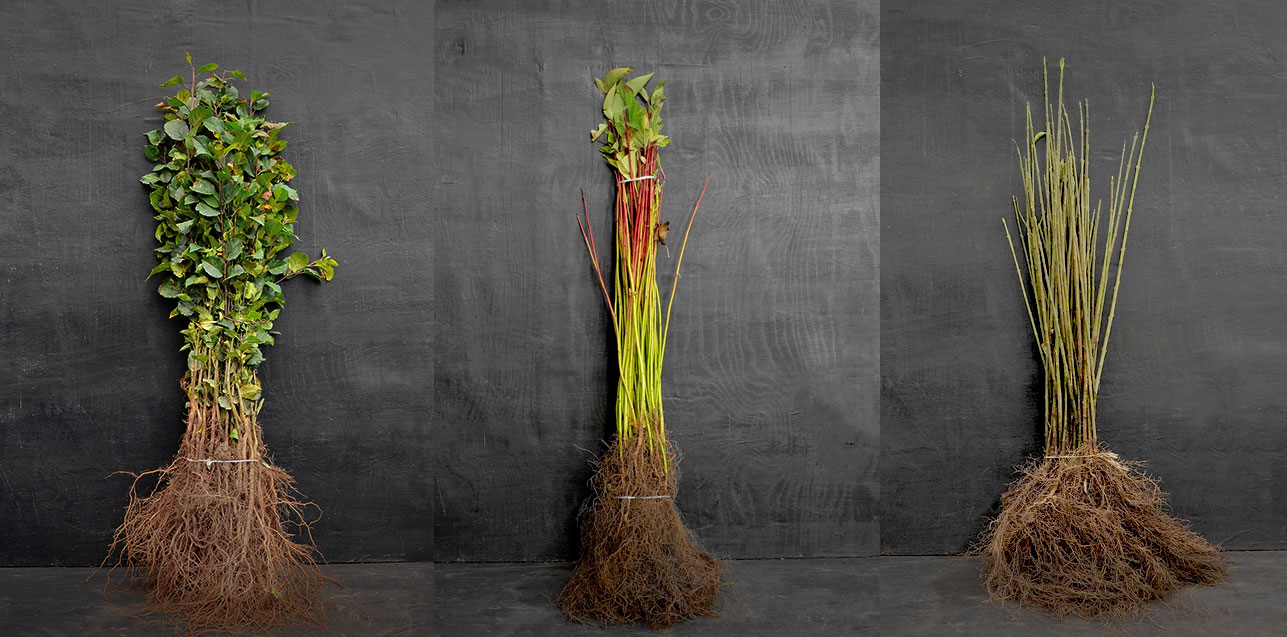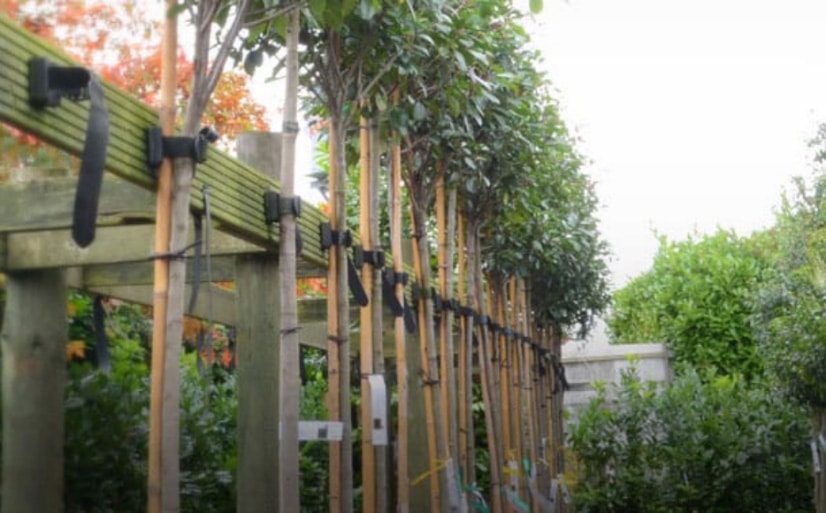Bare Root
You can buy so many types of bare root native hedging plants and bare root trees; it is difficult to list them all. If you cannot find what you are looking to buy please get in touch through our contact page, and we will try to help. Using bare root plants, although only available when dormant, (November to March) is incredibly cheaper than using container grown material.
It is important to ensure the roots are not exposed to the sun or drying winds between lifting in the nursery and planting on site. For these reasons please keep your bare root hedging plants in the box or bag when planting out. We would recommend planting at 5 per metre in a double staggered row, and be sure to ‘heel them in’ tightly to ensure good root to soil contact!
Bare root Native hedges and trees are available to buy from November to March each year, you can pre-order as early as late September and October.
So what do we mean in the nursery industry when we say ‘bare root’? We mean hedging or trees that have been grown in a field and then lifted when dormant for planting out into hedges by our customers.
Why do we do this? Because the alternative method of growing in containers is much more costly and not always necessary. Bare root trees and garden hedging plants are quite happy to be transplanted in this way as long as a few simple rules are remembered. Do not expose the roots to long periods of sunlight or drying winds. Keep them away from heat and in a frost free building or vehicle between lifting and replanting. We refer to these plants as hardy. Plants such as Hawthorn, Field Maple, Dog Rose, Dogwood and Hazel can all be handled in this way. So, instead of paying several pounds for a container grown tree or hedging plant, King & Co can provide bare root plants for a few pence each!
The key to successful establishment of bare root plants is the ‘heeling in’ when planting. Great care should be taken to ensure the hedging is heeled in tight to obtain good root/soil contact. Also ensure that the soil is well prepared before planting to enable the roots to find oxygen. Drainage is also important. Hedges that stand in water during wet periods will always decline and quite often die.
After your bare root hedge has been established for a couple of seasons you may want to cut the tops back by around a third of the total height. This will encourage your hedging to bush out and become much thicker.
How to plant a bare root hedge
Establishing a bare root hedge in your garden may seem daunting to the uninitiated, but by following a few simple rules, success is nearly always guaranteed.
1 – If you don’t intend to set the hedge immediately upon arrival, store the plants in a cool, frost free shed or garage.
2 – When planting out, do not remove the hedging plants from the box or bag. Exposure to sun or drying winds may lead to root desiccation and eventual failure.
3 – Do not dig huge planting pits that require laborious backfilling. If the soil is reasonably good, use the notch planting technique. Push your spade 4-6” into the ground,open up a wide slit and place the root in at the nursery soil mark.
4 – Be sure to ‘heel in’ very tight. This is most important to ensure good root/soil contact. After heeling in, you should have to tug the plant quite hard to remove it.
5 – After completion of planting, mulch the hedge with either; plastic, woodchips or similar to trap moisture in, and prevent growth of weed competition.
You can buy Bare Root hedging plants and Bare Root trees online from our selection below. If you do not see the bare root plants for sale that you require then please contact us.
Please note: The bare root season is from November to March. Please call us on 01376 340469 for further information
All Bare Root
Our Most Popular selection of Bare Root hedging plants. King and Co's 40 year experience in bare root hedging, particularly...
VIEW ALLBare Root Accessories
Buy bare root accessories to significantly increase the survival rate of your newly planted bare root plants. Make it easier...
VIEW ALLBN11 Hedging Packs
Our BN11 Hedging Mixes are professionally curated to align with the current Countryside Stewardship specifications, helping landowners, farmers, and estate...
VIEW ALLComplete Hedging Packs
Complete Hedging packs contain the plants, spirals and canes calculated to your desired length of hedge. The Complete Hedging packs...
VIEW ALLFruit Trees
Bare root fruit trees are available to buy from November to March each year whilst the trees are dormant. If...
VIEW ALLNative Hedging Varieties
Native hedging plants that occur in most hedges throughout the British Isles. It is important to ensure the roots are...
VIEW ALL




